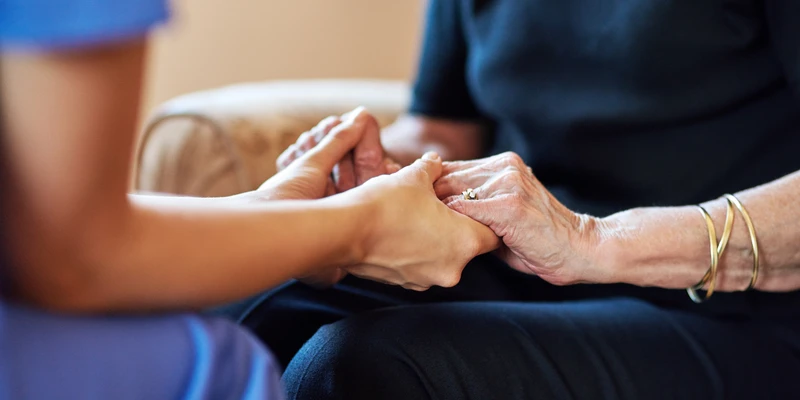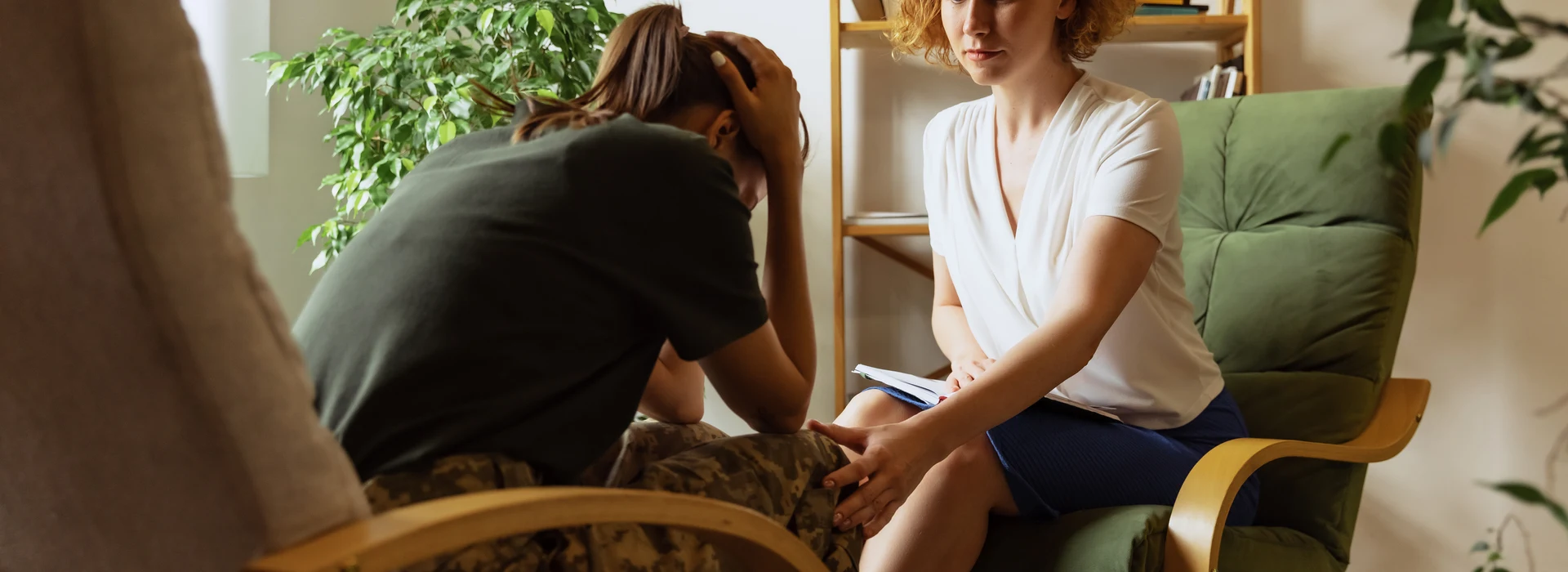Anxiety is a normal part of life and can even be helpful at times by preparing us for potential danger. However, when it becomes overwhelming and starts to interfere with daily life, it may be a sign of a more serious condition. The good news is that cognitive behavioural therapy for anxiety offers practical strategies to regain control and support lasting improvements in mental health.
Cognitive Behavioural Therapy for Anxiety Disorders
Cognitive Behavioural Therapy (CBT) is widely recognised as the first-line treatment for many anxiety and stress-related disorders. It is based on the idea that our thoughts, feelings, and behaviours are closely connected. It promotes healthier and more balanced thinking by identifying and challenging negative thought patterns that trigger anxiety.
CBT helps individuals change how they respond to distressing thoughts or situations, offering useful strategies for managing worry, fear, and stress. Over time, this leads to improved emotional regulation and a greater sense of control in everyday life.
Types of Anxiety Disorders
CBT helps address both the emotional and physical symptoms of anxiety and is effective across various types of anxiety disorders:
- Generalised Anxiety Disorder: Constant, excessive worry about daily activities.
- Panic Disorder: Sudden, intense panic attacks and fear of their recurrence.
- Social Anxiety Disorder: Overwhelming fear in social situations.
- Agoraphobia: Avoidance of places where escape might feel difficult or embarrassing.
- Separation Anxiety Disorder: Extreme distress when away from loved ones.
- Specific Phobias: Intense fears of particular objects or situations.
- Selective Mutism: Inability to speak in certain social settings, mostly in children.
Recognising these differences is an important step toward finding the right support to improve your overall quality of life.
Core CBT Techniques for Anxiety Treatment
CBT offers effective techniques to help you understand, manage, and reduce anxiety symptoms. These evidence-based methods promote lasting change by teaching new ways to think, feel, and behave:
Psychoeducation
Psychoeducation involves learning how anxiety works and how it influences thoughts and behaviours. Gaining this understanding can reduce fear and boost a sense of control. Instead of focusing solely on past experiences, CBT helps in recognising stressors and changing how you respond to them.
Cognitive Restructuring
Cognitive restructuring focuses on identifying and challenging negative thought patterns, commonly known as cognitive distortions. These include automatically assuming the worst will happen or seeing things as only good or bad, with no in-between.
By weighing the evidence for and against anxious beliefs, you develop a more balanced perspective. Practising this helps replace extreme or negative thoughts with more realistic and helpful ones, leading to improvements in mood and behaviour.
Exposure Therapy
Exposure therapy helps you gradually and safely face your fears. First, you create a list of anxiety triggers, starting with less frightening situations and working up to more challenging ones. The therapist will then guide you in confronting the feared stimuli without avoiding or relying on safety behaviours, a process known as systematic desensitisation.
Over time, repeated exposure lowers anxiety, making feared situations feel less threatening. This builds confidence and reduces the intensity of your worries, helping you enjoy life more fully. You also develop skills to manage stress rather than avoid it, which supports lasting improvement.
Behavioural Experiments
Behavioural experiments are activities you carry out during or between sessions with a therapist to test your anxious beliefs about what will happen in feared situations. For example, you might assume that speaking in public will only cause embarrassment, but after trying it, you realise that your fears are less likely to happen than you originally thought.
Journalling
Keeping a written record of your thoughts and feelings can help you gain a deeper insight into the patterns and causes of your anxiety. Regularly using journals allows you to track progress and also makes it easier to explain your struggles when you do speak to a licensed therapist.
Coping Strategies
Practising coping and relaxation skills like deep breathing and progressive muscle relaxation helps control emotional and physical symptoms of anxiety. These techniques enable you to respond calmly to stressful situations, reducing overwhelm and improving your ability to manage stress.

CBT for Anxiety Disorders and Mental Health
CBT is a highly effective treatment for a wide range of mental health conditions. A comprehensive review of 345 studies conducted between 1987 and 2021 found strong evidence supporting its use not only for anxiety, but also for depression and substance use disorders.
Many people with anxiety face co-occurring mental health challenges, such as addiction. In these cases, CBT can be especially beneficial as part of a dual diagnosis approach. This integrated treatment addresses both anxious thought patterns and addictive behaviours, offering practical tools to reduce cravings, manage stress, and lower the risk of relapse.
Starting Treatment for Anxiety
Choosing the right therapy approach for anxiety depends on your personal needs, preferences, and the severity of your symptoms. In the UK, NHS services offer free access to CBT and other evidence-based therapies through a GP referral or self-referral. However, waiting times can be longer due to high demand. If you’re seeking faster access and more tailored care, a private rehab centre may be a better option.
For moderate to severe anxiety, especially when combined with other health concerns, inpatient or residential treatment provides more comprehensive support in a safe and controlled environment. For those who prefer a more flexible alternative, outpatient programmes offer similar interventions while allowing you to stay at home and continue with daily responsibilities.
Mental health professionals will work with you to create a personalised treatment plan that supports anxiety management and long-term recovery.
Treat Anxiety at Sierra Recovery
If you or someone you care about is experiencing anxiety that feels overpowering or difficult to manage, you’re not alone, and help is available. At Sierra Recovery, we provide behavioural therapies for anxiety, including CBT, with compassionate care to support your mental health.
You don’t have to face fear, uncertainty, or worry on your own. Let our team walk alongside you on the path to healing. Reach out today for a calmer, more hopeful tomorrow.
Frequently Asked Questions
What are the key principles of Cognitive Behavioural Therapy when treating anxiety?
CBT for anxiety helps you identify and challenge negative thought patterns by reframing them with more balanced, realistic ones. It teaches practical coping and relaxation skills while gradually exposing you to feared situations in a safe, structured way to reduce avoidance.
How can Cognitive Behavioural Therapy be practised at home for anxiety relief?
At home, CBT can involve keeping a thought diary, using relaxation techniques, and challenging unhelpful thoughts that contribute to anxiety. Online resources or worksheets can also support progress between therapy sessions.
Where can one find a professional Cognitive Behavioural Therapist specialised in anxiety nearby?
You can find qualified CBT therapists through therapy directories, local mental health clinics, or by asking your GP. Many professionals now offer both in-person and online appointments, making therapy access more convenient based on your location and needs.
What types of worksheets are commonly used in Cognitive Behavioural Therapy to manage anxiety?
CBT often uses worksheets like thought records, exposure hierarchies, and journals to help track triggers and practice coping strategies. These tools guide you through structured exercises to understand and manage anxiety.
How long does it take for CBT to reduce anxiety symptoms?
Many people notice improvements within 6 to 12 sessions, but treatment duration may vary based on individual needs and severity.
How does Cognitive Behavioural Therapy differ when treating anxiety from when treating depression?
CBT for anxiety focuses on confronting fears and reducing avoidance by challenging anxious thoughts. For depression, the approach targets low mood by increasing positive activity and addressing negative beliefs about oneself and the future.






